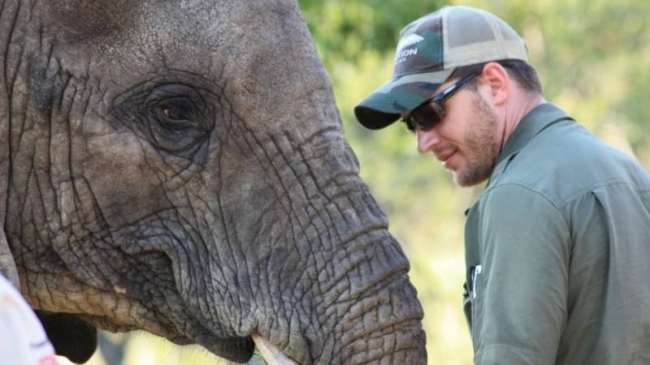
In programme two, Tom heads to Botswana, Mozambique and Tanzania, looking for answers.
In the 1930s there were believed to be nearly five million elephant ranging free in Africa. Today their total number is thought to be less than half a million. Rhino populations have also been decimated due to the simple greed for horn and ivory.
Botswana’s second biggest industry, tourism, is wildlife-related, so it has a lot to protect and more incentive than most. Tom goes to meet Tshekedi Khama, the Minister of Environment Wildlife and Tourism and a big player in the world of poaching. Tom is directed to a very secretive warehouse on the outskirts of Gaborone, Botswana’s capital city. Inside he is stunned to see thousands of elephant tusks being stored.
The ivory trade was banned worldwide in 1989 but today the black market is estimated to be worth hundreds of millions of dollars every year.
Tshekedi says: “For countries that battle with revenue, this must be one of the biggest temptations, to want to sell these things. We’re opposed to that now. Our position is that the moment you allow this to be sold, you create all sorts of other problems that come behind it. So with this asset you keep it and the best thing is to take it right off the world market so that there’s no demand, and you just don’t make it available.”
Tom heads to the spectacular location of Okavango Delta in Northern Botswana, where he meets Dr Mike Chase, who has dedicated the last ten years to studying elephants and their migrating patterns. Mike studies one herd in particular up close, which was previously in captivity in zoos and circuses in America and Canada before being reintroduced to the wild. As the family of elephants are used to human contact, Mike can study and monitor them more closely.
Mike says: “The perception in the first world is that there is someone looking after the gorillas, the zebra migrations and the wildebeest migrations and the Serengeti or African elephants, and in fact there isn’t. North of the Zambezi last year in Africa alone we lost 25,000 elephants to poaching…I won’t allow for these animals to go extinct on my watch, I mean I just couldn’t. I can’t fathom a world without elephants.”
Mike’s project is reliant on a vibrant tourist industry and his research is partly funded by the group that runs a high end safari lodge. After counting elephant carcasses from the air, he believes that the north-eastern corner of Botswana is where most of the illegal poaching activites are taking place. In the dry season the elephants are forced to move to the Chobe River to get water, making them easy pickings for poachers.
Defending the area is of national importance and in 2012 Botswana’s president declared that the primary role of the national army, the Botswana’s Defence Force (BDF), should be anti-poaching. Tom joins them on patrol and is disturbed to discover the carcass of an elephant, which has had its entire face cut off for its tusk.
Tom stays overnight on one of the BDF’s hidden camps and joins them on an armed dawn patrol, covering just one sector of the enormous national park.
Tom says: “It’s clear that fighting poaching is every bit like fighting a guerilla war.”
In contrast to Botswana, Tom’s next stop is Mozambique, one of the poorest and most war-ravaged countries on the planet. Mozambique cannot afford the anti-poaching resources of Botswana.
He heads to the outstandingly beautiful Niassa National Park, one of Africa’s last great wildernesses and home to Africa’s second largest elephant population.
Alastair Nelson, Wildlife Conservation Society says: “We’ve lost 20,000 – 30,000 elephants in the last three to four years. So we have about five years left until this elephant population will be wiped out, at this current rate of poaching.”
Next Tom travels to Mkomazi Park on the border of Tanzania and Kenya, to meet Tony Fitzjohn, a rhino conservationist who runs a rhino sanctuary and has no option but to rely on electrified fences and high-security armed guards to keep the animals safe on his 4000 hectares.
Fitz says: “Look at me, I’m from the Born Free generation and what am I doing, I’m building fences everywhere, how sad is that?”
A big part of Fitz’s programme is to educate children in the local community.
Fitz says: “The more we educate people, the less they want to go poaching in the bush…The kids go back and they’re our ambassadors, they’re the people changing the attitudes in the village, not us.”
As Tom’s African trek draws to a close, he is determined not to be despondent.
Tom says: “There is a war going on here and in most places we are losing it…I came here looking for answers and I found more questions. Stockpiles of ivory and rhino horns are gathering dust when live animals are being slaughtered every day…I know less now than when I started the documentary, so it’s really just the beginning.”
Poaching Wars With Tom Hardy is co-produced by Burning Bright and Hardy, Son & Baker.

